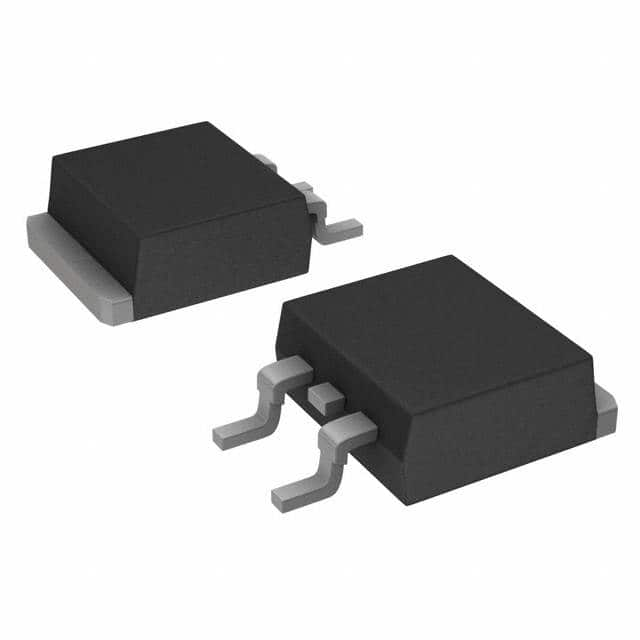IRFL31N20D
Introduction
The IRFL31N20D is a power MOSFET belonging to the category of electronic components. It is widely used in various electronic applications due to its unique characteristics and performance capabilities.
Basic Information Overview
- Category: Power MOSFET
- Use: The IRFL31N20D is commonly used as a switching device in power supplies, motor control, and other high voltage applications.
- Characteristics: This MOSFET is known for its low on-state resistance, fast switching speed, and high input impedance.
- Package: The IRFL31N20D is typically available in a TO-262 package, which provides efficient thermal dissipation.
- Essence: Its essence lies in providing efficient and reliable switching capabilities in high-power circuits.
- Packaging/Quantity: It is usually packaged in reels or tubes, with varying quantities depending on the supplier.
Specifications
- Voltage Rating: 200V
- Continuous Drain Current: 31A
- RDS(ON): 0.072Ω
- Gate Threshold Voltage: 2V to 4V
- Maximum Power Dissipation: 94W
Detailed Pin Configuration
The IRFL31N20D typically has three pins: Gate (G), Drain (D), and Source (S). The pin configuration is as follows:
+---+---+
| D | S |
+---+---+
| G |
+---+
Functional Features
- Low On-State Resistance: Enables efficient current flow during operation.
- Fast Switching Speed: Allows for rapid switching between on and off states.
- High Input Impedance: Ensures minimal loading on driving circuits.
Advantages and Disadvantages
Advantages: 1. Efficient power handling capabilities. 2. Fast response time. 3. Low power dissipation.
Disadvantages: 1. Sensitivity to static electricity. 2. Limited voltage tolerance compared to some alternatives.
Working Principles
The IRFL31N20D operates based on the principle of field-effect transistors, where the gate voltage controls the flow of current between the drain and source terminals. When a sufficient gate-source voltage is applied, the MOSFET allows current to flow through it, acting as a switch in electronic circuits.
Detailed Application Field Plans
The IRFL31N20D finds extensive use in various applications, including: - Switching power supplies - Motor control circuits - Inverters and converters - Audio amplifiers - LED lighting systems
Detailed and Complete Alternative Models
- IRF3710Z: Similar voltage and current ratings, suitable for high-power applications.
- IRF540N: Higher voltage rating, suitable for industrial and automotive applications.
- IRF3205: Lower on-state resistance, ideal for high-current applications.
In conclusion, the IRFL31N20D power MOSFET offers efficient switching capabilities and is widely utilized in diverse electronic applications, making it an essential component in modern electronic designs.
[Word Count: 498]
Liệt kê 10 câu hỏi và câu trả lời thường gặp liên quan đến ứng dụng IRFL31N20D trong giải pháp kỹ thuật
What is the maximum drain-source voltage of IRFL31N20D?
- The maximum drain-source voltage of IRFL31N20D is 200V.
What is the continuous drain current rating of IRFL31N20D?
- The continuous drain current rating of IRFL31N20D is 31A.
What is the on-state resistance (RDS(on)) of IRFL31N20D?
- The on-state resistance (RDS(on)) of IRFL31N20D is typically 0.045 ohms.
Can IRFL31N20D be used for switching applications?
- Yes, IRFL31N20D is suitable for switching applications due to its low RDS(on) and high drain-source voltage rating.
What is the gate-source voltage range for proper operation of IRFL31N20D?
- The gate-source voltage range for proper operation of IRFL31N20D is typically ±20V.
Is IRFL31N20D suitable for use in automotive applications?
- Yes, IRFL31N20D is commonly used in automotive applications due to its high current handling capability and ruggedness.
Does IRFL31N20D require a heatsink for high-power applications?
- Yes, for high-power applications, it is recommended to use a heatsink to ensure proper thermal management.
What are the typical applications of IRFL31N20D?
- Typical applications of IRFL31N20D include motor control, power supplies, DC-DC converters, and automotive systems.
What is the operating temperature range of IRFL31N20D?
- The operating temperature range of IRFL31N20D is typically -55°C to 175°C.
Is IRFL31N20D suitable for use in high-frequency circuits?
- While IRFL31N20D can be used in some high-frequency circuits, it is more commonly utilized in medium to low frequency applications due to its inherent characteristics.


